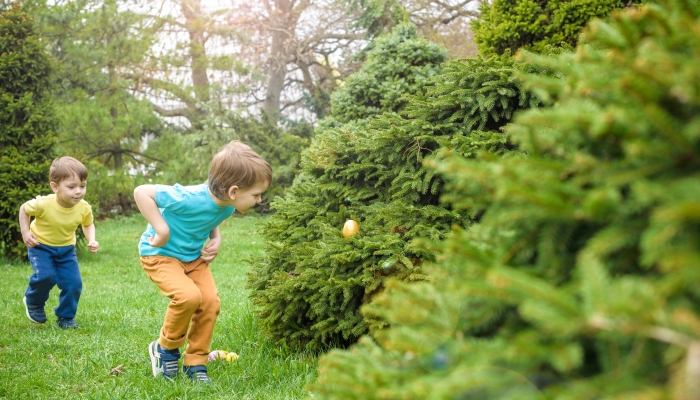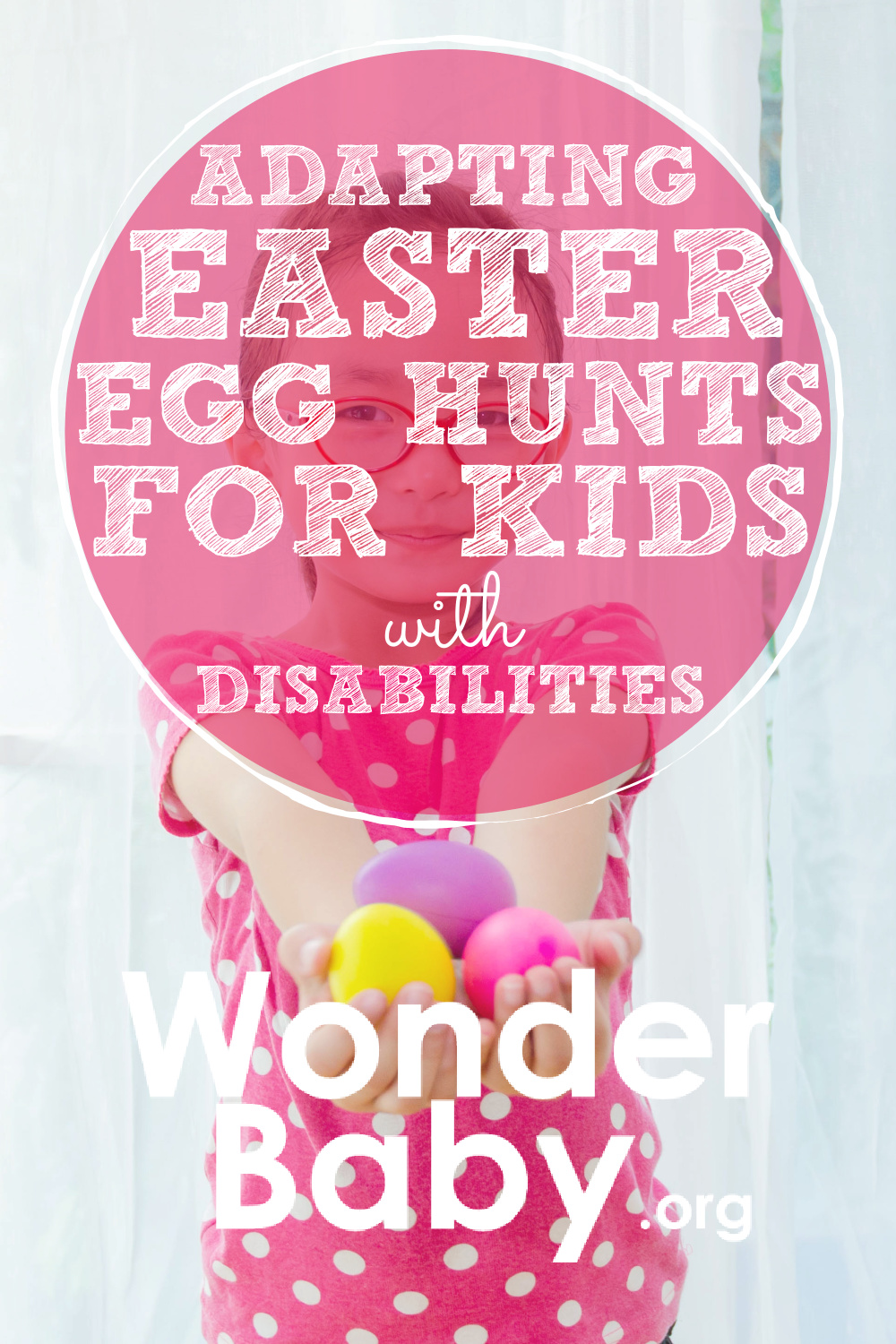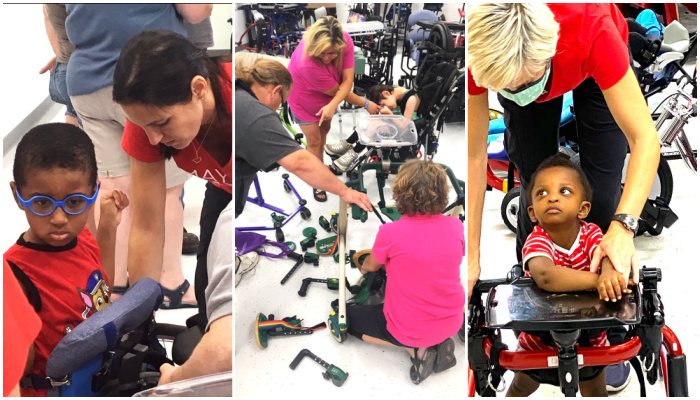Adapting Easter Egg Hunts for Kids With Disabilities

- Traditional Easter egg hunts can be inaccessible to those with disabilities.
- Throwing an accessible Easter egg hunt is the perfect way to ensure all attendees enjoy themselves.
- You should consider a wide range of disabilities when planning your event.
- Simple modifications can create an inclusive event that the whole community can attend.
- Allowing attendees to communicate their access needs in advance can help you organize a truly accessible event.
Easter egg hunts are a longstanding and much-loved tradition. You probably remember attending Easter egg hunts when you were little and the excitement of collecting a basket of chocolates to take home. Many people feel Easter is incomplete without an Easter basket stuffed with eggs.
Sadly, many organized Easter egg hunts fall short regarding accessibility. The crowds, the uneven ground, and the time pressure mean these events don’t work for many families. Thankfully, with a few simple modifications, it’s easy to throw accessible Easter egg hunts that everyone can enjoy.
Children with disabilities shouldn’t miss out on fun childhood traditions like finding hidden Easter eggs. All it takes is a little planning, and you can make Easter egg hunts accessible to every child.
When it comes to accessibility, there are lots of things to consider, from physical access issues to how you communicate information about the event. Reach out to your local community and find out what would make Easter egg hunts accessible for their children.
How To Adapt Easter Egg Hunts for Different Disabilities
There are many different disabilities, and you’ll need to consider as many as possible to make your event truly accessible. One easy way to ensure you cover every eventuality is to make the event ticketed and ask for access requirements during the booking process. This way, you’ll know your attendees’ access needs so you can plan carefully and ensure you meet them all.
Here are some ways to make Easter accessible for all:
Mobility Impairments

For children with mobility impairments, traditional Easter egg hunts can be problematic. Egg hunts often occur off the beaten path with uneven ground and climbing involved. It’s easy to create an Easter egg hunt accessible to children with mobility impairments; all you have to do is:
- Choose an accessible location. You’ll need even flooring, wide walkways, and a mud-free environment to ensure everyone enjoys the Easter egg hunt.
- Hide the eggs in reachable hiding spots. If you’re using eggs the children can collect, don’t tuck the eggs away out of reach. Instead, ensure all participants can easily reach the eggs. Avoid placing Easter eggs on the floor where children in wheelchairs will struggle to grab them.
- Skip the Easter egg collections altogether. Rather than asking participants to collect the eggs, why not opt for a visual Easter egg hunt? Place brightly colored pictures of Easter eggs around, and tell the children how many they need to find. Once they’ve found all the pictures, they can collect a chocolate Easter egg from the organizers.
- Accessible baskets. Children who use a walker may struggle to hold their own basket. To foster independence, offer Easter baskets that attach to walkers so children can carry all the eggs by themselves.
Sensory Processing Disorders

For children with sensory processing disorders, the chaos of an organized Easter egg hunt may be overwhelming. Here are some ways to adapt the event to create an accessible Easter egg hunt:
- Manage numbers. To ensure the event doesn’t feel too noisy and chaotic, make it a ticketed event. You don’t need to charge for tickets if you don’t want to, but ensure people book a place in advance if they want to attend. This will allow you to control numbers and keep chaos to a minimum.
- Offer a protected quiet space. A protected quiet space can make all the difference for children with sensory processing disorders. Set up a calm zone where children can escape if they want.
- Offer sensory-friendly eggs. Sensory-friendly eggs are a fantastic way to improve the accessibility of your event. You can purchase sensory eggs in different textures, sizes, and materials. Allow children to explore the eggs. Include eggs with different scents, light-up eggs, and noise-making eggs to engage all the senses.
Visual Impairments

Children with visual impairments don’t need to miss out on the Easter egg hunt; here are some ways you can make your event accessible to visually impaired children:
- Use beeping Easter eggs. Children with visual impairments rely heavily on their other senses, so ensure you engage these senses during your Easter egg hunt. A beeping Easter egg hunt is bound to be a hit. Ensure the talking Easter eggs or beeping eggs are easy to hear in the space you’ve chosen for your event. Beeping Easter eggs are likely to be popular with children with sensory processing needs.
- Offer tactile maps. A tactile map allows visually impaired kids to explore the area and find their way to the Easter eggs. You can use materials like felt and foam to make the map tactile. Tactile maps engage children with their surroundings, help them improve their orientation skills, and allow visually impaired children to participate in the Easter egg hunt alongside their peers.
- Opt for bright colors. Hide eggs that are easy to spot for children with low vision. Brightly colored eggs will stand out and be easier to spot for those with low vision. Make a conscious effort to place the eggs on a contrasting background to make the colors pop.
- Use balloons. Balloons will make the Easter eggs easier to spot for children with low vision. Tie the balloons to the eggs so they sit at eye level and grab the attention of children with low vision.
Hearing Impairments

For participants with hearing impairments, it may help if you use:
- Visual cues. Any instructions given audibly will be missed by children with hearing impairments. Plan ahead so you have visual cues ready to signal the start of the hunt. Have all the instructions written down or displayed in easy-to-understand pictures so all participants receive the same information.
- Sign language interpreters. Sign language interpreters can help families with hearing impairments communicate with the organizers. To make your Easter egg hunt accessible, have a sign language interpreter to facilitate aid communication.
- Brightly colored or light-up eggs. To improve visual cues, you need the eggs to stand out. Brightly colored, light-up, or glowing Easter eggs will grab the children’s attention.
Intellectual and Developmental Disabilities

The following modifications will make your event more accessible to children with intellectual and developmental disabilities:
- Simple rules and clear instructions. The simpler, the better. Don’t overcomplicate it. Consider your messages in advance. Are your signs straight to the point? Can you say it in fewer words? Can you use pictures to explain your message further?
- Different colored eggs for different kids. One of the problems with an Easter egg hunt is that the faster you are, the more eggs you get. This can leave some children with very few eggs. Having a color-coded system ensures all participants get a fair amount of eggs and can enjoy the hunt without feeling pressured to rush.
- Providing helpers and buddies for assistance. Having volunteers on hand to assist families can take the stress out of the day. The volunteers can ensure children can participate in the hunt while having fun.
Pre-Event Planning and Organization

When planning an accessible Easter egg hunt, you should:
Choose an accessible location.
If the venue isn’t accessible, the event won’t be accessible—it’s really that simple. You need to ensure the venue is accessible to those in wheelchairs. Visit the venue in person to assess their accessibility; too many venues claim to be accessible when they’re not.
Consider parking spaces nearby. For those with mobility issues, nearby parking will be crucial. If the venue has toilets, ensure they have accessible toilets for participants. If your event takes place outdoors, you’ll want an even surface that won’t fall victim to bad weather (slippery mud is far from accessible).
Consult with parents and specialists.
When planning an accessible event, information is key. Speak to parents to find out what would make an event truly accessible (and enjoyable) for their child. Reach out to charitable organizations and healthcare specialists for advice about planning an accessible event for children with disabilities.
Make sure you find out dietary requirements in advance. For children with food restrictions, an Easter egg hunt might be disappointing if they can’t eat any eggs. Ensure you have some non-edible eggs for children with food limitations. You can use plastic eggs and fill them with pocket money or toys, such as stickers, temporary tattoos, and toy cars.
Send out accessible invitations.
Consider the communication needs of the families you hope to invite. Ensure messaging is clear, concise, and written in an easy-to-understand format. For families with visual impairments, ensure that electronic communications can be read by a screen reader.
When booking tickets for the event, ask attendees about their access needs. If you know their access, communication, and dietary needs in advance, you can plan for these to create a truly accessible event.
Provide information in advance.
Some children benefit from knowing what to expect. If you ensure parents and caregivers have as much information as possible about the event, they can fully prepare their children for what to expect.
Include timings, food choices, how many people will be present, and how the Easter egg hunt will work. Include details like whether children should expect chocolate or plastic eggs and whether you will have edible eggs for children with dietary requirements.
Include a detailed map showing the venue, including things like access entrances and accessible toilets. Be sure to include nearby disabled parking spots and public transport stops.
Signpost areas of interest.
Be sure to include clear signage around the venue. Ensure accessible toilets are signposted so parents can navigate there easily and quickly. Make sure there is signage directing people to the Easter egg hunt, and have volunteer greeters at the door to answer any queries and welcome families on the day.
Safety Considerations

When organizing any type of public event, it’s crucial to undertake a thorough risk assessment. Highlight any potential safety risks for different disabilities and put plans in place to reduce the risks.
Have first aiders in case of accidents, and ensure they have experience working with children with disabilities. Hopefully, there won’t be any accidents, but it’s essential to be prepared for every eventuality.
With all your planning out of the way, you can relax, enjoy the event, and wish your local community a safe and happy Easter.

Related Posts

Special Needs
5 Spring Cleaning Tips for Families of Children with Disabilities
Spring cleaning is an opportunity to create a more accessible, organized, and supportive space for your child with disabilities. Declutter, deep clean, and refresh!

Visual Impairment
The Gift of Understanding: How a Young Child Helps His Blind Father Navigate Life
When a parent is blind, it’s natural for people to wonder how their sighted child will adapt. Will they struggle to understand their parent’s needs? Will they feel burdened by...

Assistive Technology, Support
May We Help: Engineering Independence for People with Disabilities
May We Help is dedicated to designing and building custom solutions that help individuals of all ages achieve mobility, access, and independence, all at no cost.